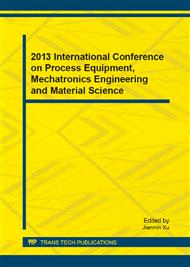p.110
p.114
p.118
p.124
p.129
p.133
p.137
p.141
p.144
Study of Crack Initiation and Propagation in TBCs by Experiments and Extended Finite Element Method
Abstract:
CoNiCrAlY bond coat (BC) and top ceramic coating (TCC) was fabricated on the GH99 super alloy by high velocity oxyfuel spray (HVOF) and air plasma spray (APS), respectively. Thermal cycling treatment was applied to the thermal barrier coatings (TBCs). The cross-sectional images of crack initiation and propagation of TBCs after treatment were investigated by scanning electron micrograph (SEM), meanwhile crack initiation and propagation in TBCs were analyzed based upon ABAQUS software using extended finite element method (XFEM). The results show that, crack initiation and propagation can be easily traced via microscopy at the interface areas in TBCs; after thermal cycling treatments, the crack associated with the TCC/TGO interface morphology initiates at interface peak area and propagates along TCC/TGO interface with thermal cycles; the interface roughness affects the crack magnitude in length and width obviously, the rougher the morphology, the bigger the crack is; the XFEM is a novel and effective method to well predict the crack initiation and calculate the crack propagation, and simulation and experimental results fit well.
Info:
Periodical:
Pages:
129-132
Citation:
Online since:
July 2013
Authors:
Keywords:
Price:
Сopyright:
© 2013 Trans Tech Publications Ltd. All Rights Reserved
Share:
Citation:


